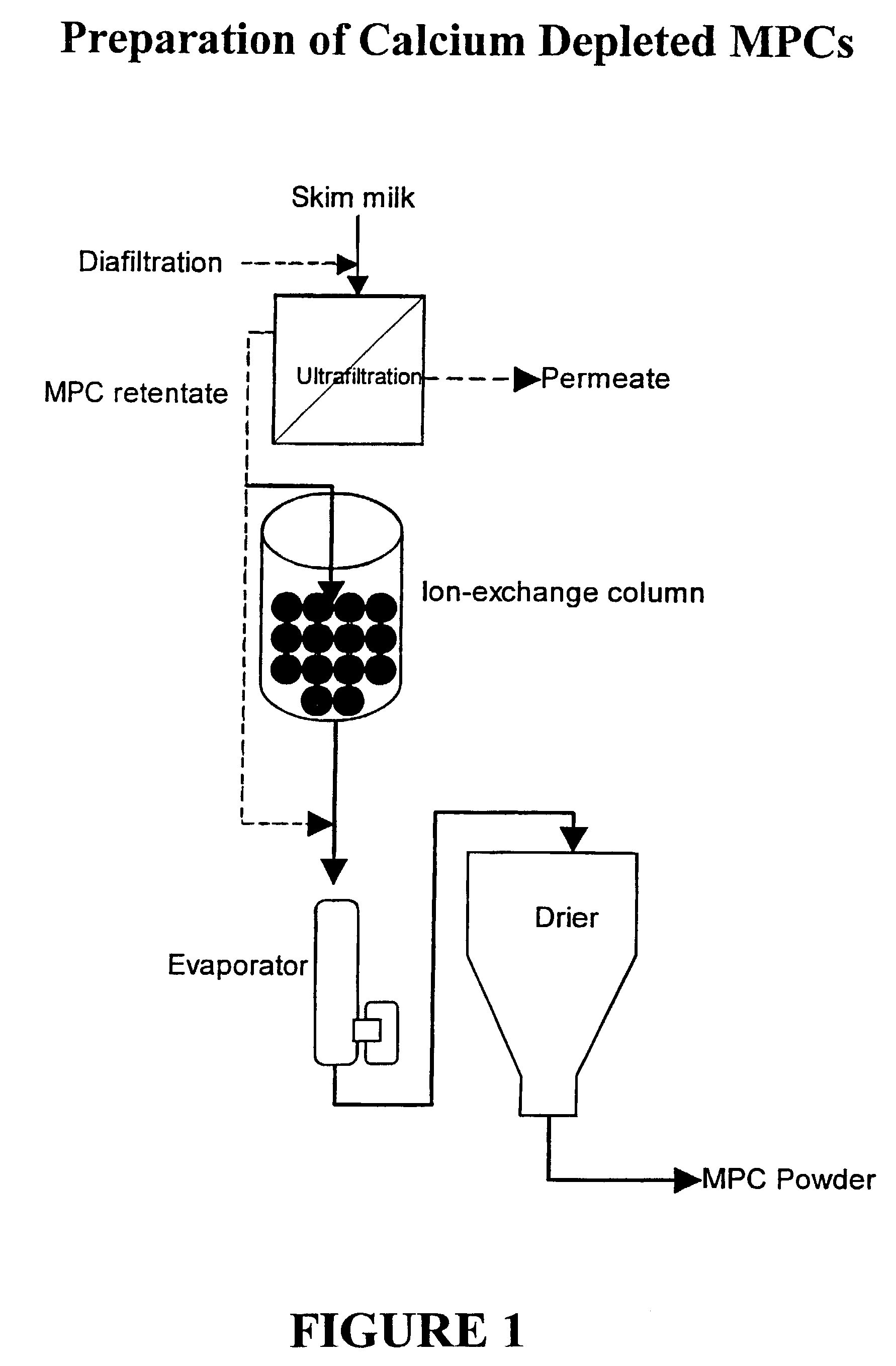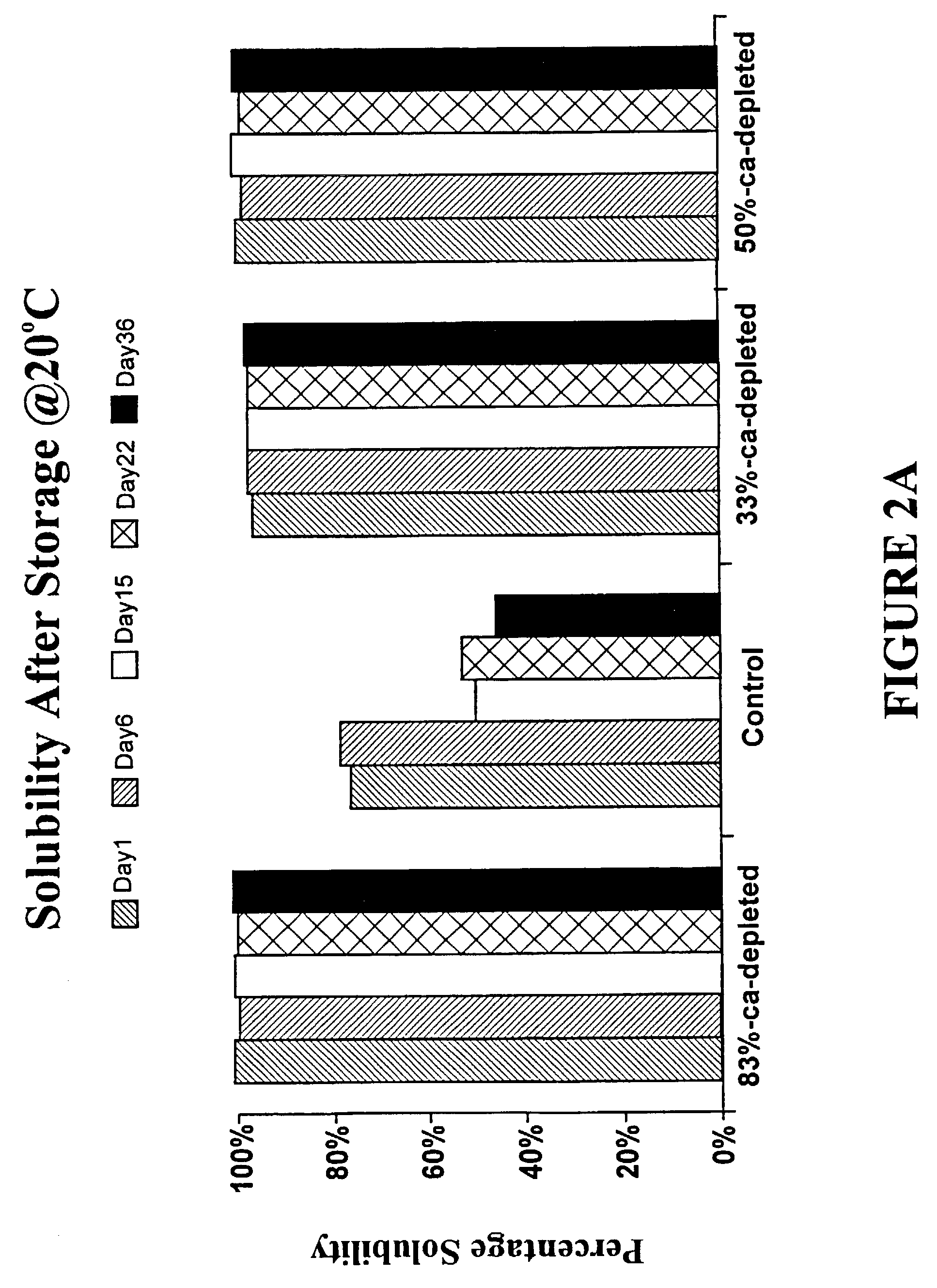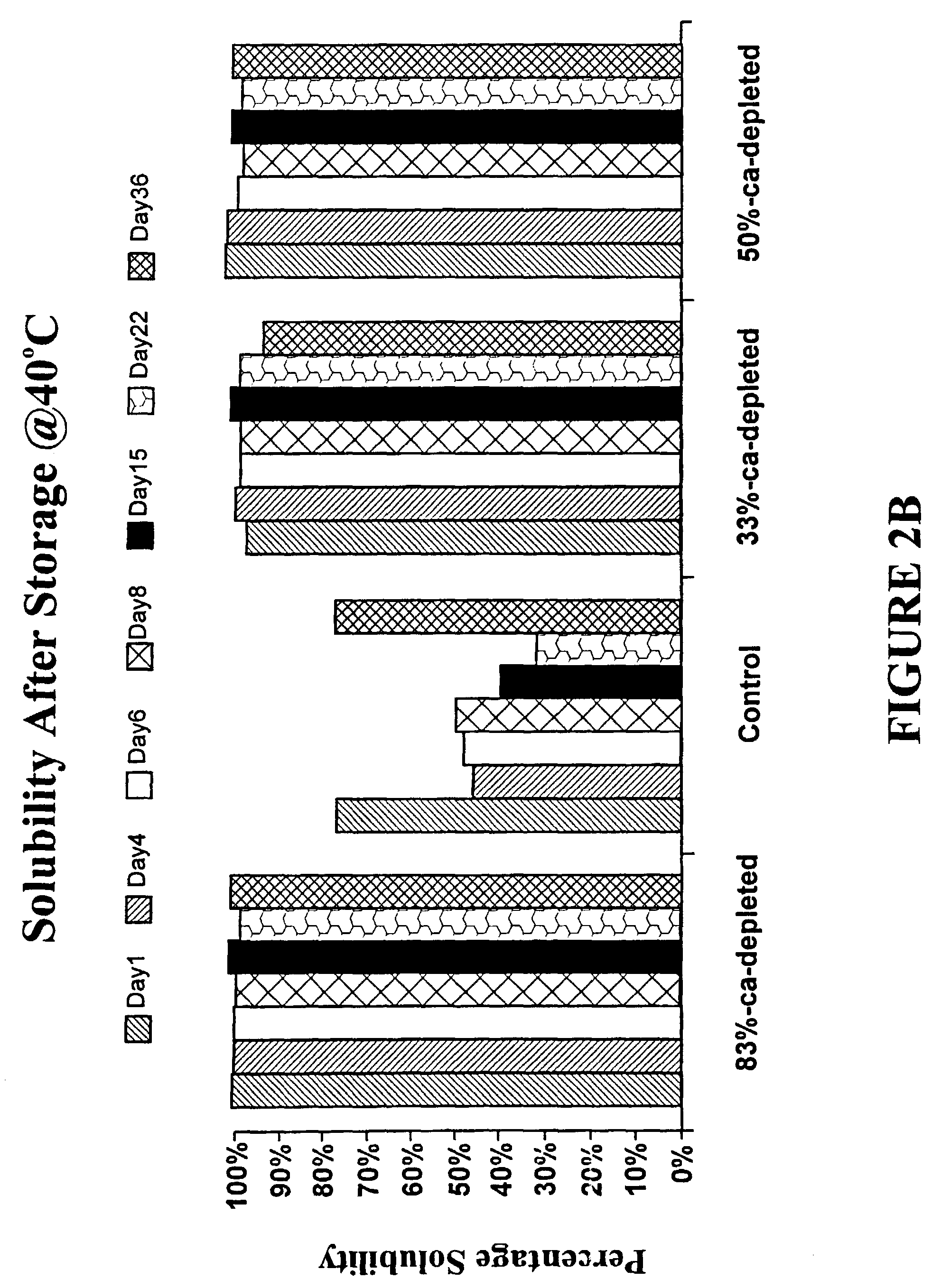Milk protein products and processes
a technology of protein products and processes, applied in the field of milk products, can solve problems such as nugget formation problems, and achieve the effect of superior solubility and avoidance of “nugget” formation
- Summary
- Abstract
- Description
- Claims
- Application Information
AI Technical Summary
Benefits of technology
Problems solved by technology
Method used
Image
Examples
example 1
Preparation of Dried Calcium Depleted MPCs by Ion-Exchange
[0064]As illustrated in FIG. 1, skim milk is subjected to concentration on an ultrafiltration (or a microfiltration) membrane (Koch S4 HFK 131 type membranes having a nominal molecular weight cut-off of 10,000 daltons) to produce an MPC retentate. Depending on the concentration factor used, the MPC retentate will have a protein content in the range of 42–85% of the dry matter is milk protein.
[0065]For example when a skim milk of 1000 kg of concentration given in Table 1, is concentrated by 2.5 times, 400 kgs of MPC56 retentate and 600 kgs of permeate will be obtained.
[0066]A part of the 400 kg MPC56 retentate, which had a pH of 6.8 was reduced to 5.9, using 3.3% citric acid. The acid was added to the retentate at 10° C., while continuously agitating the retentate. For example, to produce 50% Ca-depleted MPC56, 200 Kg of the retentate was pH-adjusted to 5.9. After fifteen minutes, the pH of the retentate was measured again. De...
example 2
[0074]Four dried MPI samples with 85% milk protein were tested for solubility after storage over a period of time. For each a 5% w / v solution was prepared in water after 1, 6, 15, 22 and 36 days. After reconstituting into a 5% w / v solution at 20° C., the solutions were centrifuged for 10 minutes at 700 g. The results are shown in FIGS. 2A and 2B. The three calcium depleted samples (33%, 50% and 83% depletion) stored at 20° C. all showed approximately 100% solubility on each occasion. The control dried MPI samples showed about 70–80% solubility on days 1–6 and this declined to about 50% by days 15 to 36. Similar results were obtained with storage at 40° C.
example 3
Cheese Preparation
[0075]Four MPC samples with 85% milk protein were tested in cheese making. 3.6 kg of fresh skim milk containing 3.55% protein and 0.05% fat was the starting material. Fresh cream (400 grams) was added under medium shear to the fresh skim milk previously brought to 32.5° C. The resulting milk solution contained 3.42% protein and 4.36 fat as determined by Milkoscan Analyses.
[0076]The milk solution was divided into four batches. To each batch a different MPC containing 85% protein was added. One batch received control MPC with no calcium depletion. The reconstitution temperature was 6.5–8.5° C. The other three batches received calcium depleted MPCs each with 85% protein. The calcium depletion was 25%, 50% and 98%. The reconstitution was carried out at a temperature of 6.5–8.5° C. for the 33% calcium depleted MPC. For the 50% and 98% calcium depleted MPCs a temperature of 4.5–6.0° C. was used.
[0077]All powders dispersed into the milk well. No problems were noticed with...
PUM
 Login to View More
Login to View More Abstract
Description
Claims
Application Information
 Login to View More
Login to View More - R&D
- Intellectual Property
- Life Sciences
- Materials
- Tech Scout
- Unparalleled Data Quality
- Higher Quality Content
- 60% Fewer Hallucinations
Browse by: Latest US Patents, China's latest patents, Technical Efficacy Thesaurus, Application Domain, Technology Topic, Popular Technical Reports.
© 2025 PatSnap. All rights reserved.Legal|Privacy policy|Modern Slavery Act Transparency Statement|Sitemap|About US| Contact US: help@patsnap.com



